7th Annual Meeting of
the GD, 1 - 2 April 2003
Bundesinstitut für Arzneimittel und Medienprodukte (BfArM) Bonn
[Federal Institute for Drugs and Media Products]
Press Releases
![]() Dermopharmacy-Innovation Prize Awarded for the First Time
Dermopharmacy-Innovation Prize Awarded for the First Time
![]() Skin-related Consumer Protection and Information
Skin-related Consumer Protection and Information
![]() Improved Consumer Safety by Standardized Quality Criteria
Improved Consumer Safety by Standardized Quality Criteria
![]() Light Cutaneous Carcinoma - the Underestimated Danger
Light Cutaneous Carcinoma - the Underestimated Danger
![]() New Treatment Methods by Modulating of Immune Systeme
New Treatment Methods by Modulating of Immune Systeme
Interlocutors at the press conference were:
Dr. Walter Wigger-Alberti (acting head of the department Dermocosmetics of the GD; director "Clinical Examination" at proDerm-Dermatological Research GmbH)Moderation:
Frank von Spee (imprint Publikation and PR, Hamburg)
Press contact:
Impressum Publikation und PR
Adenauerallee 10, 20097 Hamburg
Tel.: 040-31 78 64 10, Fax: 040-31 78 64 64
E-mail: info@impressum.de
Dermopharmacy-Innovation
Prize Awarded for the First Time
Professor Dr. med. Jean Krutmann awarded for his outstanding
research work in the field of photobiology of skin
(Bonn, 2.4.2003) In future the GD - Gesellschaft für Dermopharmazie
e.V. will pay tribute to outstanding innovations in the field of Dermopharmacy
with the newly conceived Dermopharmacy Innovation Prize (DIP) in irregular intervals.
The prize itself is a work of art made of glass and designed for this particular
purpose, representing a cross-section of skin. On 1 April 2003 this prize was
awarded for the first time in the frame of 7th GD Annual Meeting in Bonn. Prize
winner is Professor Dr. med. Jean Krutmann of the Institut für Umweltmedizinische
Forschung (Institute for Environmental Medical Research) at Heinrich-Heine University
Düsseldorf, for his outstanding scientific work in the field of photobiology
of skin.
Skin reddening after sun exposure and development of sunburn are phenomena caused
by biochemical processes. UV-radiation of sunlight induces damages in the DNA
of skin cells, which only regenerate slowly. "Professor Krutmann has made
an essential contribution by his pioneering investigations that certain sun
protection agents and an after-sun-gel are available today as a means to decompose
these damages more swiftly", professor Dr. Wolfgang Wiegrebe, retired ordinary
professor for pharmaceutical chemistry at Regensburg University and speaker
of the prize committee, expounds. "For this and further research, professor
Krutmann is honoured with the Dermopharmacy-Innovation Prize of the GD".
Sunlight Impairs the DNA
If human skin is exposed to the sun, under the influence of the short-wave UV-B rays changes of the DNA are produced and thus disorders of the immune system conveying the growth of tumor cells. "It could be shown by means of animal experiments that a healthy immune system is able to reject tumor cells", professor Wiegrebe reports. To this end, foreign tumor cells have been transplanted to mice entailing a reaction of their immune system to these cells. However, if the mice had been irradiated with UV-B before, they were no longer able to fight against the transplanted tumor cells and as a consequence the tumor spread.
Repair Enzyme Entails a Swift DNA-regeneration in Skin
In a natural way human DNA regenerates only slowly as the injured parts have to be cut out, re-synthesized and refit into the DNA. In contrast to human beings, the Alga Anacystis nidulans produces a repair enzyme, the so-called photolyasis by which it protects itself from the UV-radiation of the sun. Under long-wave UV-light this enzyme splits cross-linked DNA-cords in corresponding separate cords, which can then be read off once again. Since the availability of photolyasis-containing sun protection and after-sun preparations, the repair effect of the enzyme can also be made use of for human skin. Krutmann observed that the human cells affected by the UV radiation regenerate much more rapidly under the influence of photolyasis. Already after a 30-minute exposure approximately 45 percent of the damages are reversed and the dermal immune system is even completely restored.
Overall Performance Honoured
Professor Krutmann has also made an essential contribution to the clarification
of UV-A rays. They are equally dangerous because they entail the formation of
aggressive oxygen radicals which enhance early skin ageing and the development
of the cutaneous carcinoma as well as other light dermatoses. Moreover, Krutmann
was concerned with the clarification of genetically determined skin diseases,
which are conditioned by sunlight. Accordingly the GD awards the overall performance
of professor Krutmann as researcher in the field of dermal photobiology with
its Dermopharmacy-Innovation Prize
top
Skin-related
Consumer Protection and Information
GD Society for Dermopharmacy — interdisciplinary forum for questions concerning prevention and treatment of skin diseases
(Bonn, 2.4.2003) Which properties should skin care products available in the market have for persons with dry skin and skin prone to acne, bearing the attribute "dermocosmetic", respectively which tests should these products undergo? Which sun protection agents are suited for patients suffering from neurodermitis, acne or enhanced sensitivity to light? Is there a new approach concerning prevention and treatment of cutaneous carcinoma? For more than seven years pharmacists, physicians and other skin experts, who created a mutual scientific forum in cooperation with the GD Gesellschaft für Dermopharmazie e.V., deal with these and related questions.
The interdisciplinary field of Dermopharmacy is placed in the midst of medicine
and pharmacy. "Our field of activity deals with topics regarding the external
and internal application of drugs, medicinal products, cosmetics and food supplements
which serve the prevention and treatment of skin diseases", Dr. Joachim
Kresken, president of the GD explained. The spectrum stretches from new methods
for the treatment of widespread skin diseases as psoriasis, neurodermitis or
fungal diseases via dermocosmetic sun protection to recommendations towards
professional skin protection. Concerned with the respective subjects are departments
with highly qualified experts and other working groups.
Public Relations a Predominant Target
The GD has committed itself to present latest research insights and treatment
methods not only to expert circles but also to the wide public. Accordingly,
the GD publishes special advisory brochures for consumers besides guidelines
and statements for expert circles. Relating to the subjects onychomycosis and
dry skin such advisory brochures are available in the meantime. Research results
both concerning new and also proven skin drugs as well as cosmetics have been
published in its dermopharmaceutic scientific magazine "DermoTopics"
which is available as printed magazine and online-version. Moreover, the GD
organizes a large number of further professional and information events. All
guidelines and position papers of the society as well as other information and
advice regarding the topics prevention and treatment of skin diseases are also
retrievable at the GD-homepage under www.gd-online.de.
top
Improved Consumer Safety by Standardized Quality Criteria
Society for Dermopharmacy introduces guidelines for dermocosmetic sun protection and occupational skin protection products
(Bonn, 2.4.2003) Which sun cream is qualified for oily skin? Which properties
should sun protecting products for persons suffering from neurodermitis and
other high-risk groups have and which tests should they be subject to? In Germany
so far there had only been as few coherent standards as for agents, which are
available for the protection of skin from occupational strains. The GD Gesellschaft
für Dermopharmazie e.V. has recently presented the first guidelines for
these two product categories established by experts of different fields and
thus contributed to a higher level of consumer safety.
Who believes to solely orient himself in finding the adequate light protection
factor as dermal sun protection underestimates the problem. The individual suitability
of sun protection agents may be very different. Also supplementary agents have
to be considered when selecting a product. Thus, persons having an inclination
to acne have to use a different sun protection agent than persons with dry and
sensitive skin. "Due to the fact that there is no standardized recommendation
for sun protection products with special skin conditions in Germany", Dr.
Walter Wigger-Alberti of the GD outlines, "the GD has now published interdisciplinary
guidelines for the dermocosmetic sun protection considering besides dermatological
also pharmaceutical aspects".
Sun Protection: UVA-sector Likewise Important
The improvements already commence with the test methods for the protecting effect:
on the majority of the sun protection products there is only an indication as
to the protection for the sector UVB-rays - by means of the so-called light
protection factor. UVB-rays are part of the sunlight and above all responsible
for the generation of sunburn and the cutaneous carcinoma. However, also the
UVA-rays are harmful, which are not taken into consideration in the light protection
factor. In contrast to the UVB-rays they even penetrate window glass. "The
effect of UVA-rays has been underestimated for a long time, since they only
contribute to a minor degree to sunburn", Wigger-Alberti expounds. "They
are however able to trigger delayed effects and furthermore contribute to premature
skin ageing". As in Germany there is no generally recognized procedure
for the determination of UVA-protection so far, it is still frequently neglected.
Products however, corresponding to the GD guidelines have to be tested concerning
their UVA-protection effect according to a standardized procedure, for example
the Australian standard.
Additional Factors: Skin Tolerance and Photo-stability
A further quality criterion is skin tolerance. In principle, irritating or allergenic
substances should be used as little as possible in cosmetics. Sun protection
agents or skin care products with peroxide-forming ingredients for example are
able to trigger the so-called Mallorca-acne. "By applying of sun protection
and après preparations which are free of peroxide-forming ingredients,
the appearance of this skin phenomenon can be prevented in most cases",
according to Wigger-Alberti. "Further protection from Mallorca-acne ensures
a high UVA-protection". Dermo-cosmetic sun protection agents should additionally
be tested according to the new guidelines in view of their eye tolerability
and photo-stability. Photo-stability means that the UV-filter present in the
product does not decompose under the influence of sun radiation. "This
fact is often not considered with traditional products", Dr. Wigger-Alberti
explains. Also further, for instance skin soothing or cell-regenerating effects
are to be tested according to strict criteria before indicating them on the
package. A proper use also plays an important role." Many consumers apply
sun protection agents in a much too thin layer so that the light-protecting
effect is drastically reduced compared with the indications on the package",
Wigger-Alberti emphasizes.
Guidelines also for Occupational Skin Protection Agents
The GD has established guidelines for occupational skin protection products
in cooperation with the Arbeitsgemeinschaft für Berufs- und Umweltdermatologie
(ABD) [Study Group Occupational- and Environmental Dermatology] in the Deutsche
Dermatologische Gesellschaft (German Dermatological Society) recommending a
more differentiated and interdisciplinary testing. Occupationally dependent
skin diseases concern in most cases contact eczema of the skin which are caused
by regular contact with skin-irritating industrial substances, so-called "humid
work" or solely by frequent hand washing - for example at hairdressers
or persons employed in sanitary professions. Particularly severe consequences
have allergenic contact eczema, which in most cases necessitate a cessation
of the professional activity. "Skin protection agents in addition to cloves
are part of the personal protective equipment", Wigger-Alberti outlines.
"They should be applied before each potential skin strain." The new
guidelines stress that skin protection agents should be integratively adapted
to the often simultaneously used skin cleansing and care products. In order
to improve their acceptance by the employees, the agents should be well absorbed
by skin and compatible with the corresponding occupational activity. A skin
protection agent for employees in the metal industry is for example not to affect
the corrosion protection of the work-piece. Skin protection agents for the food
industry have to be thoroughly selected due to a possible characteristic odor.
Proof of the Protective Effect by Experiments at Test Subjects
The new guidelines for occupational skin protection agents recommend not only
to test the individual ingredients but also the finished product in its final
composition with appropriate methods as to its effectiveness and tolerance.
For the effectiveness proof, test methods should be applied whenever possible,
for which the protective effect of the products is compared to certain model
harmful substances at human skin. "Only by performing such tests, an assessment
according to present findings is possible as to whether or not a product can
also be effective at practice conditions", Wigger-Alberti explains. "On
the basis of theoretical considerations the principle has been spread for a
long time that fat-solubilizing harmful substances can always optimally be prevented
with water-soluble protective products and vice versa. Only when these findings
had been tried at experimental subjects it had been recognized that there are
also exceptions to that rule and the selection of an inadequate skin protection
product may even lead to an intensification of the occupationally-conditioned
skin strain."
top
Light
Cutaneous Carcinoma - the Underestimated Danger
Far more spread than the black
variant - Society for Dermopharmacy founds a Task Force
(Bonn, 2.4.2003) While it is generally known in the meantime that excessive sunbathing may lead to the black cutaneous carcinoma, the malignant melanoma, other skin cancer types, namely the prickle-cell carcinoma and basalioma are mostly neglected. However, these cancer types also denominated as "light skin cancer" are more frequent than the malignant melanoma. The GD Gesellschaft für Dermopharmazie e.V. has therefore founded a Task Force taking the dangers of the light cutaneous carcinoma into account.
The situation gives rise to concern. "In the frame of the increase of an average life expectancy - at present for women 80 years, respectively 74 for men in Germany - we face more and more intensely the phenomenon of aged skin", expounds the GD's vice-president professor Dr. med. Hans Christian Korting. "Particularly important for health and especially for skin ageing conditioned by exterior factors is the so-called extrinsic ageing. Predominantly due to a changed spare time comportment, a massive sun exposition over the decades also in Europe comes about. This leads in the end to an increased number of the black but also of the so-called light cutaneous carcinoma". For that reason the GD, integrating dermatologists, pharmacists, scientists as well as skin experts from the pharmaceutical and cosmetic industry has founded a study group for cutaneous carcinoma prevention - the Task Force "Licht.Hautkrebs.Prävention" (Light.Skin Cancer.Prevention) which has now been introduced to the public at the 7th Annual Meeting of the GD in Bonn. A focus is set above all on the clarification and research of the light skin cancer.
Rough light Tyloma as Preliminary Stage to Light Cutaneous Carcinoma
The spinocellular carcinoma (prickle-cell carcinoma of skin) is despite its frequent appearance relatively unknown due to the fact that metastases develop only seldom. However untreated, this carcinoma may, as the malignant melanoma, lead to death. In general the prickle-cell carcinoma only appears with persons over the age of 60. Affected are for the most part people with fair complexion who have exposed themselves intensely to the sun during their entire lifespan. A frequent preliminary stage is the so-called actinic keratosis, the rough light tyloma, by which already 40 percent of the over forty-year old are affected in Australia - but in Central Europe still a percentage of 10 to 15. A reddened skin area is formed with a brownish, thickened horny layer. In case the changed skin cells burst the limit from the epidermis to the dermis, the prickle-cell carcinoma comes into being, which proliferates cauliflower-like. "The risk that the light tyloma present with many persons becomes cancerous is estimated at up to 16 percent per year", according to professor Korting. The most frequently affected places are those which are most exposed to the sun - face, ears, the back of hands and lower arms as well as the bald head with men. At an early diagnosis and timely therapy start, the carcinoma respectively its preliminary stage, the actinic keratosis can be successfully treated. Besides traditional physical treatment methods as the cryo-therapy recently there are new forms of scientifically well-founded medicinal treatments comprising in particular an application of a gel with the active substance Diclofenac and the additive hyaluronic acid. Moreover, the so-called photodynamic therapy is applied lately based on a sensitizing substance (amino laevuline acid) in combination with light.
Basalioma - Most Widespread Type of Cutaneous Carcinoma in Central Europe
In Central Europe even more frequent than the spinocellular carcinoma is however the basalioma (basal-cell carcinoma). This skin cancer type does not develop metastases, but becomes continuously enlarged and destroys skin, tissue located underneath it and possibly even bones in this process. The most frequently affected skin areas as well as high-risk groups correspond to the ones of the prickle-cell carcinoma, whereas an increasing number of younger persons are affected with this disease. Basaliomae often appear as small even knots, which have a glossy surface. Later on they may turn reddish or brownish and get crusty or scaly. Equally a basalioma can be removed by different methods. After the removal a regular dermatological control is required due to the fact that if once a basalioma has appeared, it is probable that such tumours also develop at other locations, which however are no metastases. In case a basalioma is not completely removed, the remnants of the tumour may start to regrow.
Task Force Aims at Arousing the Public Interest
"It is our concern to direct the public awareness to the light cutaneous
carcinoma types", professor Korting explained the objective of the GD Task
Force "Licht.Hautkrebs.Prävention" (Light.Skin-Cancer.Prevention),
"also in the field of research we will considerably intensify our efforts."
Thus, the Task Force will push forward evidence-based research concerning light
cutaneous carcinoma types, establish diagnosis guidelines for dermatologists
and initiate the incorporation of these carcinoma types into the carcinoma register.
So far they are only classified as "Miscellaneous Skin Cancer" in
the WHO-classification ICD 173. "The major target however is", professor
Korting summarizes, "to call people's attention to the fact that a skin-endangering
behaviour is not only able to lead to the black cutaneous carcinoma but to an
even higher extent to the light skin cancer and that effective sun protection
by light protection products and appropriate clothing as well as regular dermatological
control represent the best way of prevention".
New Treatment Methods by Modulating of Immune System
7th Annual Meeting of the GD - Society for Dermopharmacy introduced new therapy methods for eczema, neurodermitis and cutaneous carcinoma
(Bonn, 2.4.2003) Human resistance is determined by manifold factors: environmental
influences as UV-radiation, pollen or house dust mites, entail more and more
frequently a deregulation of the immune system. Often eczema or inflammatory
skin diseases as neurodermitis develop as a consequence. However, at the present
time there is a series of new therapies on hand which are able to control and
regulate the reactions of the immune system. In the course of 7th Annual Meeting
of the GD - Gesellschaft für Dermopharmazie e.V. on 1st and 2nd April 2003
in Bonn, in which approximately 200 dermatological experts from the fields dermatology,
pharmacy and cosmetology took part, these new treatment methods as well as other
research results were presented.
In the last years dermatology has made enormous progress in the therapy of widespread
skin diseases. Thus, for example a novel retinoid has been successfully tested
for the treatment of many types of hand eczema. The appearance of chronic hand
eczema has drastically increased. They may have a variety of causes and lead
in many cases to occupational disability with professions such as hairdressers,
painters or employees in care professions. "The skin contact with certain
foodstuffs or an overreaction towards environmental substances may induce this
inflammatory reaction of the skin", professor Dr. med. Thomas Ruzicka,
scientific head of the Annual Meeting of the Society for Dermopharmacy explains.
Retinoids are chemical compounds, which derive from vitamin A and have been
successfully applied with diseases such as acne and psoriasis for a long time.
Recently it has been discovered that a certain type of retinoids that are taken
in form of tablets has proven highly effective with various chronical hand eczema.
It is still uncertain what kind of effect the retinoid has on the eczema. An
important role probably plays its compensating effect on the immune system.
Approximately 15 Percent of Children Suffer from Neurodermitis
An additional focus of the GD's Annual Meeting was set on chronically inflammatory skin diseases as neurodermitis (atopical eczema) and psoriasis. At present roughly 15 percent of all children as well as one percent of adults are diseased with neurodermitis. There is an increasing tendency: every ten years these figures double. It can be assumed that the cause of neurodermitis lies among other causes in a genetically-conditioned overreaction of the immune system. Normally harmless factors as house dust mites or pollen alarm the immune system and induce that skin is overwhelmed with inflammatory cells which then cause the typical symptoms as itching and reddening. To date neurodermitis has predominantly been treated with cortisone-containing ointments, moisturizing creams and itching-soothing antihistamines. However, cortisone may have a skin-thinning effect making skin thus susceptible to a recurrence of the disease. With the novel substance class of the topical immune modulators (TIMs) there is for the first time an effective alternative to the treatment with cortisone. Topical immune modulators have a regulating effect on the equilibrium of the immune system. In the course of the allergic immune defence T-lymphocytes are activated in order to develop antibodies (immune globulin-E-antibodies, IgE) against the alleged dangerous factors, e.g. house dust mites. This process develops the known symptoms for the persons concerned. The topical immune modulators are able to penetrate the T-lymphocytes and to decelerate their activity. Thus the overreaction of the immune system is intercepted and the inflammation is able to heal.
In the case of psoriasis, which affects about two million people in Germany
other immunologically active substances, the so-called "Biologicals"
may help. These drugs also influence the immune system and consequently intervene
in the inflammation. "Biologicals" are also helpful with rheumatism
and inflammatory intestinal diseases. They are in most cases administered in
form of injections or infusions. The use of "Biologicals" with inflammatory
skin diseases is at present subject to worldwide intensive research.
120.000 New Cases of Cutaneous Carcinoma Per Year
The figures of patients affected by cutaneous carcinomae increase. In Germany
approximately 120.000 new diseases are diagnosed annually. The cause is in most
cases an excessive UV-strain of skin by sunlight. The most frequent cutaneous
carcinoma is the basal-cell carcinoma. "This form appears with men more
frequently than with all other types of cancer altogether", professor Ruzicka
explains. A preliminary stage of the carcinoma is the actinic keratosis, a skin
elevation that often develops at parts of the skin, which are particularly exposed
to the sunlight. The chirurgical rehabilitation may be problematical in individual
cases for example with location at the nose. As concerns cutaneous carcinoma
and its preliminary stages, dermatology has successfully conceived new healing
methods. Also in this field a new treatment method has been developed which
has a positive effect on the immune system. The topical immune stimulator Imquimod
is applied as ointment on the affected parts of the skin. The active substance
penetrates the tissue and activates the defence cells, which are then able to
destroy the cells diseased.
With Red Light Against Cancerous Cells
A different method for the treatment of actinic keratosis and the basal-cell
carcinoma represents the photodynamic therapy in the course of which a light-sensitizing
substance is applied in form of a cream on the diseased skin parts. During a
treatment time of three hours, porphyrines, a kind of natural coloring, develop.
These porphyrines are light active and form a photo toxically-effective substance
from oxygen. In the course of the following radiation of the skin by cold red
light, the cancerous cells systematically sensitized by the cream are destroyed.
Healthy skin tissue is not strained by the therapy. Moreover, particularly at
infestation of the face, the positive cosmetic effect is of particular significance
as there is no scar formation with this treatment method.
top
GD
Press Conference Bonn 2003

Picture: GD Gesellschaft für Dermopharmazie
Bundesinstitut für Arzneimittel und Medizinprodukte (BfArM),
Bonn 2 April 2003
(Federal Institute for Drugs and Media Products BfArM)
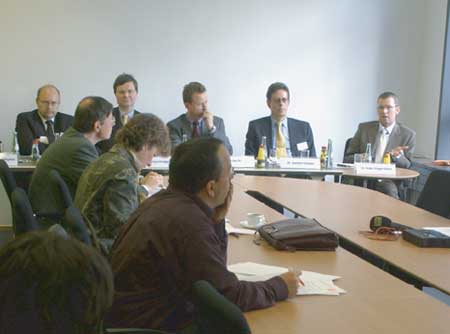
Picture: GD Gesellschaft für Dermopharmazie
From left: Prof. Dr. med. Thomas L. Diepgen, Prof. Dr. med. Hans Christian
Korting,
Frank von Spee (Moderator), Dr Joachim Kresken,
Dr. Walter Wigger-Alberti

Picture: GD Gesellschaft für Dermopharmazie
From left: Prof. Dr. Wolfgang Wiegrebe, Prof. Dr. med. Thomas L. Diepgen,
Prof. Dr. med. Hans Christian Korting, Frank von Spee (moderator),
Dr Joachim Kresken, Dr. Walter Wigger-Alberti
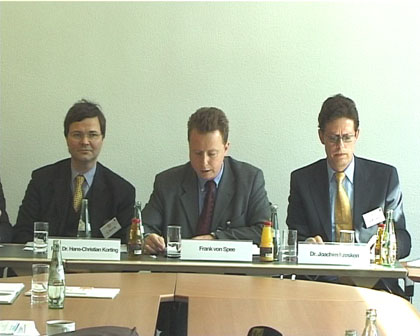
Picture: GD Gesellschaft für Dermopharmazie
From left: Prof. Dr. med. Hans Christian Korting,
Frank von Spee (moderator), Dr Joachim Kresken
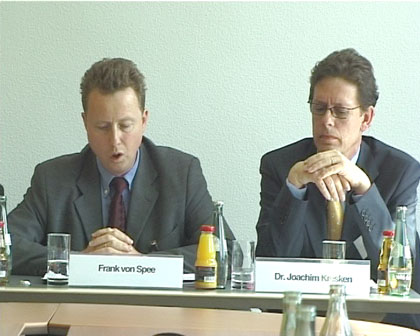
Picture: GD Gesellschaft für Dermopharmazie
From left: Frank von Spee (moderator), Dr. Joachim Kresken, Viersen.
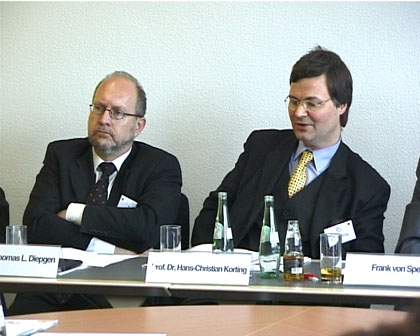
Picture: GD Gesellschaft für Dermopharmazie
From left: Prof. Dr. Thomas L. Diepgen, Prof. Dr. med. Hans Christian Korting
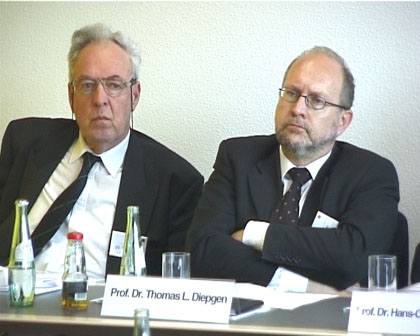
Picture: GD Gesellschaft für Dermopharmazie
From left: Prof. Dr. Wolfgang Wiegrebe, Prof. Dr. Thomas L. Diepgen
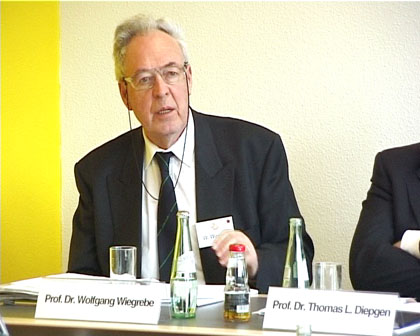
Picture: GD Gesellschaft für Dermopharmazie

Picture: GD Gesellschaft für Dermopharmazie

Picture: GD Gesellschaft für Dermopharmazie

Picture: GD Gesellschaft für Dermopharmazie
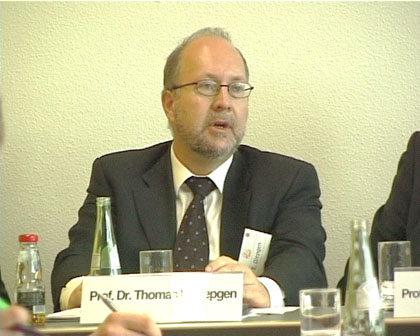
Picture: GD Gesellschaft für Dermopharmazie

Picture: GD Gesellschaft für Dermopharmazie
Dr.
Walter Wigger-Alberti

Picture: GD Gesellschaft für Dermopharmazie
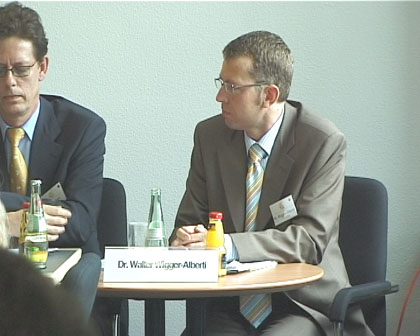
Picture: GD Gesellschaft für Dermopharmazie
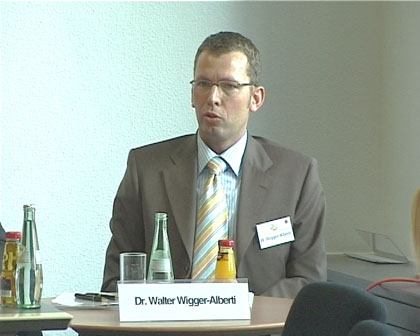
Picture: GD Gesellschaft für Dermopharmazie
Prof. Dr. med. Hans-Christian Korting
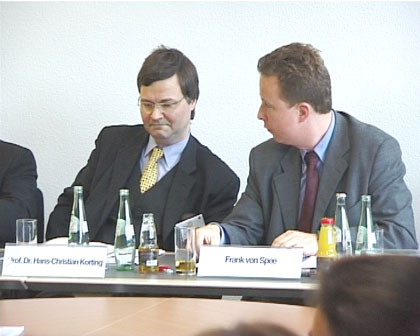
Picture: GD Gesellschaft für Dermopharmazie
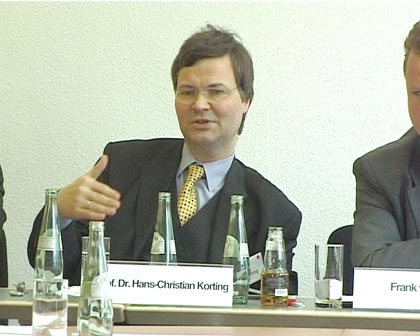
Picture: GD Gesellschaft für Dermopharmazie
Dr. Joachim
Kresken
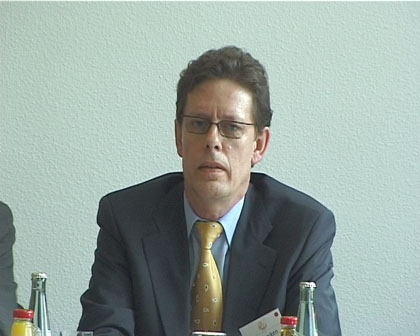
Picture: GD Gesellschaft für Dermopharmazie
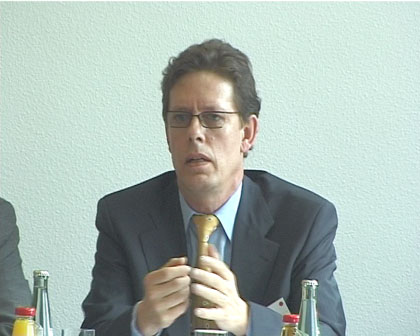
Picture: GD Gesellschaft für Dermopharmazie
Frank
von Spee (right), moderator of the press conference

Picture: GD Gesellschaft für Dermopharmazie
Copyright © 2000 - 2003 Institute for Dermopharmacy GmbH webmaster@gd-online.de